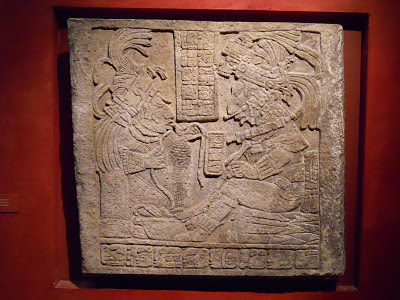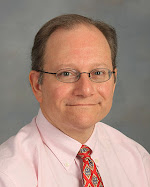Monday, November 28, 2011
New Pictures
Wednesday, November 2, 2011
What I Did Last Summer
For the other Mayanists out there, I thought I would post my photos of the Yaxchilan lintels in the British Museum. Feel free to use them for non-profit educational or scientific purposes. The new Mexican room at the museum is lovely.

Yaxchilan Lintel 24

Yaxchilan Lintel 15.

Yaxchilan Lintel 16.

Yaxchilan Lintel 16 again. A better picture.

Yaxchilan Lintel 17.

Yaxchilan Lintel 17 again. A slightly better picture.
Hope these are useful to someone out there in cyberspace.
Thursday, September 8, 2011
Archaeoplanet: A Great New Blog
Friday, August 26, 2011
Maya Ceramic Texts
Friday, May 20, 2011
The Plain Language Act
If you Google "Plain Language Act," the relevant government website pops up, http://www.plainlanguage.gov/. Follow the link to the Guidelines. They are 117 pages long. Good luck!
Friday, May 6, 2011
Language change, diffusion, and more early dates from South America
This first article may seem a little off-topic, but I think it is directly relevant to prehistory.
Dunn, Michael, Simon J. Greenhill, Stephen C. Levinson, and Russell D. Gray (2011). Evolved Structure of Language Shows Lineage-specific Trends in Word-order Universals. Nature 473, 79-82.
Published yesterday, this article tests hypotheses, originally posed by Chomsky and Greenberg, about the innate structures of language by studying how languages have changed through descent within language families. The authors studied four of the larger language families, Austronesian, Indo-European, Bantu, and Uto-Aztecan, to see if certain kinds of changes co-occurred, which would imply that those characteristics were cognitively or neurologically linked. Interesting, the authors found little evidence for either Chomsky's or Greenberg's hypotheses, and conclude that "[l]inguistic diversity does not seem to be tightly constrained by universal cognitive factors specialized for language. Instead, it is the product of cultural evolution, canalized by the systems that have evolved during diversification, so that future states lie in an evolutionary landscape with channels and basins of attraction that are specific to linguistic lineages." (p. 82). This seems to me to be an eminently sensible conclusion that harmonizes with my own knowledge and experience of language and historical linguistics. In individual cases, it is easy to see how specific changes to languages are strongly constrained and conditioned by their linguistic and cultural contexts, so the results of the analysis are not surprising. As an aside, I think that Otomanguean would have been a better choice than Uto-Aztecan for this study because the former is larger (in terms of numbers of daughter languages) and its evolution is less confounded by the effects of later migrations.
Since we're talking about linguistics, I want to mention an article by the famous linguist William Labov (Labov, William 2003. Pursuing the cascade model. In D. Britain and J. Cheshire (eds). Social Dialectology: In Honor of Peter Trudgill. Amsterdam: John Benjamins. Pp. 9-22). Very interesting! He assembles evidence that lexical diffusion tends to jump from larger cities to smaller ones in rank order, rather than diffusing outwards like waves from centers of innovation. This is modeled using the gravity model from geography, which has also been applied in archaeology. I had no idea that the gravity model had been applied in this manner. This also has implications for models of diffusion in archaeology.
Finally, a bit of pure archaeology:
Jolie, Edward A., Thomas F. Lynch, Phil R. Geib, J. M. Adovasio (2011). Cordage, Textiles, and the Late Pleistocene Peopling of the Andes. Current Anthropology, Vol. 52, No. 2, pp. 285-296.
They directly dated textiles and cordage from Guitarrero Cave in Peru to ~12,000 cal yr B.P. "Direct dating" in archaeology means they actually dated the artifact in question, rather than an associated object, such as a lump of charcoal in the same feature or stratum. Guitarrero Cave is a pretty well-known site that had previously produced some unusually early--pre-Clovis--radiocarbon dates. The site is located in an intermontane valley in the Andes and is known for its Archaic/Paleoindian (?) occupation. The new dates as well as corrections applied to older ones suggest the earliest occupation dates from 12,100-11-800 cal yr B.P. This is not as early as Monte Verde, Chile, but it is still pretty early.
Thursday, April 28, 2011
New Hieroglyphic Stairway found at El Palmar, Campeche
Here's the URL if you prefer to cut and paste it: http://newswatch.nationalgeographic.com/2011/04/25/the-meaning-of-words-new-evidence-of-ancient-maya-history/
Thursday, March 31, 2011
Cacao in the Southwestern U.S.
Washburn, D.K., Washburn, W.N., Shipkova, P.A. The prehistoric drug trade: widespread consumption of cacao in Ancestral Pueblo and Hohokam communities in the American Southwest, Journal of Archaeological Science (2011), doi: 10.1016/j.jas.2011.02.029.
The lead author, Dorothy Washburn, is best known for applying the techniques of symmetry analysis, from crystallography, to the formal analysis of designs on archaeological artifacts.
Many of the the vessels studied come from eleventh century deposits at Pueblo Bonito and Pueblo del Arroyo in Chaco Canyon, while the remainder come from the fourteenth century deposits at Los Muertos. Although this is not the first time that cacao residues, primary theobromine, have been identified in Ancestral Puebloan pots, the sample tested in this study was much larger (75 vessels) and from a wider variety of contexts (i.e., both elite and non-elite). The results were astonishing: 50 of the 75 vessels tested (67%) revealed evidence of cacao. Thus, it appears that trade in cacao, which must have come from Mesoamerica, was much more widespread than previously believed.
Great stuff!
Where else should we be looking for cacao?
Saturday, March 26, 2011
Report on Pre-Clovis Occupation in Central Texas
important for us is a report from Texas A&M on the excavation and dating of a Pre-Clovis
complex in central Texas. Here's the citation:
Michael R. Waters, Steven L. Forman, Thomas A. Jennings, Lee C. Nordt, Steven G. Driese,
Joshua M. Feinberg, Joshua L. Keene, Jessi Halligan, Anna Lindquist, James Pierson, Charles T.
Hallmark, Michael B. Collins, James E. Wiederhold (2011). The Buttermilk Creek Complex and
the Origins of Clovis at the Debra L. Friedkin Site, Texas. Science 331:1599-1603.
The Friedkin site appears to be well-preserved and displays a high degree of stratigraphic integrity. Lead author Michael Waters is a distinguished geoarchaeologist and, surprise!, the description of the soils, stratigraphy, and geomorphology are outstanding. The site has a long occupational sequence, from Pre-Clovis through Clovis, Folsom, Late Paleoindian and Early Archaic cultures, representing a span of roughly 6,000 or 7,000 years, all sandwiched into about a meter of alluvial and colluvial sediment.
The key issue is the definition and dating of the Pre-Clovis Buttermilk Creek Complex. Because
the excavators could not recover any carbon from the site, making radiocarbon dating impossible, they relied upon optically stimulated luminescence (OSL) dating instead. This technique is somewhat less desirable than radiocarbon dating because OSL depends on local conditions, such as soil moisture content and ambient radiation rates, that can be difficult to estimate. Nevertheless, I'm inclined to believe the results in the case because the many dates form a clear, properly ordered, and internally consistent series that correlates appropriately with known information from other sites. So even if the adjustments for local conditions are not perfect, the essential fact would not change: there is a Pre-Clovis component that is many hundreds or even a couple of thousand years older than Clovis stratified below it. The OSL dates for the Buttermilk Creek Complex are reported by the authors to be 13.2-15.5 kya (kya=thousands of years ago).
Unfortunately, as at Monte Verde in Chile, the excavators did not find any really distinctive
diagnostic artifacts associated with the Pre-Clovis complex. So we still don't have any easy and
obvious means to identify other such occupations at other sites.
These finding contribute to the already significant evidence for Pre-Clovis occupation of the
Americas.
Monday, March 21, 2011
2012 News
This should serve as a reminder that the apparently silly bunk about 2012 can be deeply pernicious. However ridiculous, inane, or childish they seems to us, these outrageous fabrications can trouble people and might even push troubled people over the edge.
This is not a unique incident. I seem to remember reading somewhere about a Mayanist who took a call from a credulous person who wanted to know if he or she should kill himself before the world ended.
I want to collect stories like these. Please send me any you find.
Thanks!
Saturday, March 12, 2011
Friday, March 4, 2011
Bruce Dahlin Photo
Wednesday, February 23, 2011
My Professorial Trading Card
Here's mine. Students: Feel free to download it and add the stats. The link above provides additional (and humorous) information about the information to include. Have fun!

Friday, February 18, 2011
Wednesday, February 9, 2011
New Work at Tazumal, El Salvador
Tuesday, February 8, 2011
Job posting
Florida Atlantic University. The Department of Anthropology invites applications for a full-time, tenure-track position in biological anthropology at the Assistant Professor level starting August 2011. Research specialization is open. A Ph.D. in anthropology is required at time of appointment. The successful candidate must be committed to undergraduate and graduate teaching and mentoring as well as demonstrate research potential and a commitment to generating external funding. Five courses per year is the normal teaching load. Applications will be reviewed beginning March 15, 2011 and continue until the position is filled. Applications must be submitted online at jobs.fau.edu (posting no. 981848). Original documents such as application letter, vita, names/addresses of references, and supporting materials should be sent to: Search Committee, Dept. of Anthropology, Florida Atlantic University, 777 Glades Road, SO 171, Boca Raton, FL 33431. Florida Atlantic University serves a culturally and ethnically diverse student body and is an Equal Opportunity/Equal Access Institution.
Monday, February 7, 2011
Bruce Dahlin
He was a major figure in Maya archaeology, deeply engaged in the theoretical debates of the day. He worked throughout the Maya region, from El Salvador to Guatemala to Yucatan. He directed excavations at key sites, such as El Mirador in the Peten of Guatemala and Chunchucmil, Yucatan.
Bruce was an extraordinarily generous person and had a warm and loving soul. When I moved to Washington, D.C., he went to great lengths to include me in his personal and professional circle, attending lectures I gave and inviting my wife and me to his beautiful home for Thanksgiving dinner. He also included me in grant proposals and field projects, which had a positive effect on my career and professional advancement. He was a role model and mentor.
Friday, February 4, 2011
Mesoamerican droughts: New Dendrochronological study
David Stahle has published (yet another) important article on dendrochronology and archaeology. This one describes a new dendrochronological sequence he and his colleagues have developed for central Mexico. It is derived from the Montezuma baldcypress, and it extends back 1,238 years, back to the Late Classic period. The paleoclimatic reconstruction created from the sequence indicates a series of major droughts corresponding to significant historical changes. The Terminal Classic Maya drought is evident and can now be dated between A.D. 897 and A.D. 922. (That's one major advantage of dendrochronology over other paleoclimate proxy methods: dendrochronology can provide dates precise to the year. Methods such as paleolimnology rarely, if ever, provide such precise dating.) Another major drought occurred between 1149 and 1167, close to the end of the Toltec reign (if that's what the Toltecs did). Another drought, from 1378 to 1404, was the most extreme in the dendrochronological sequence, but its historical correlates are not obvious. Finally, a major drought occurred around the time of the Spanish conquest, from 1514 to 1539. This may have found an echo in the 1535-1536 drought in Yucatan that drove the Xiu to try to cross the province of Sotuta, which led to their massacre by Nachi Cocom, which helped motivate the Xiu alliance with the Spanish.
All in all, an important article. Here's the reference:
































